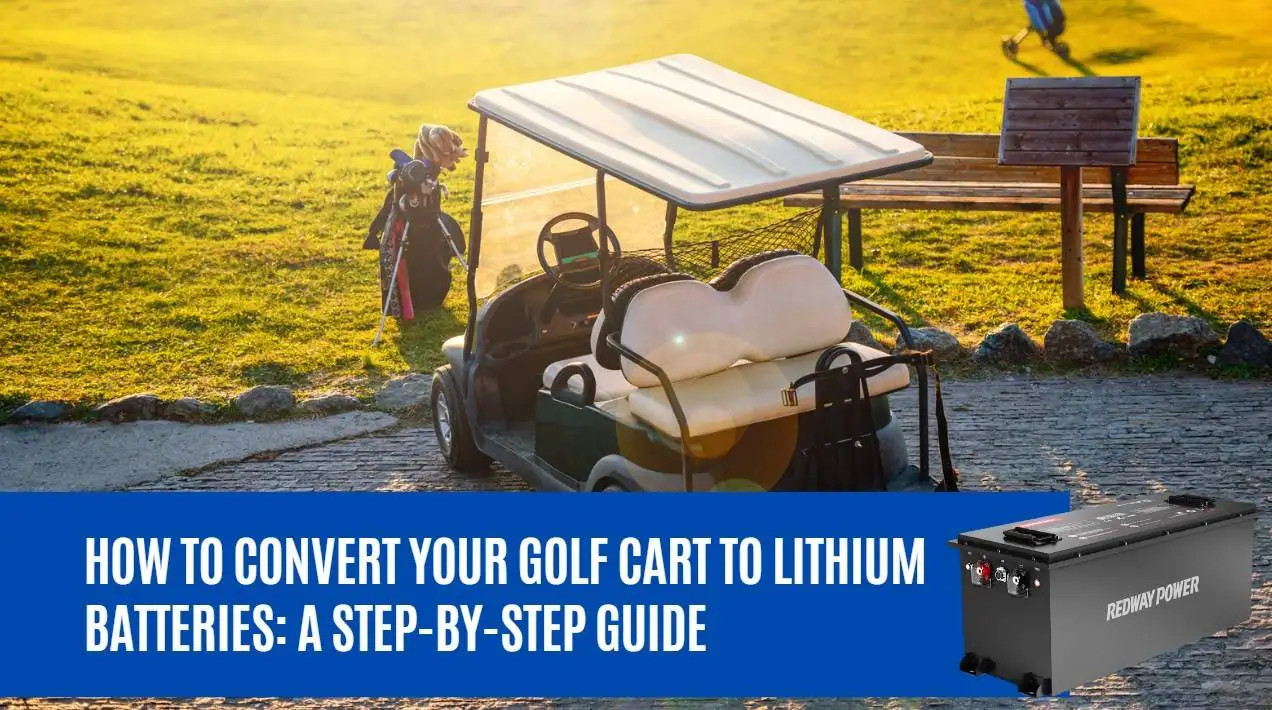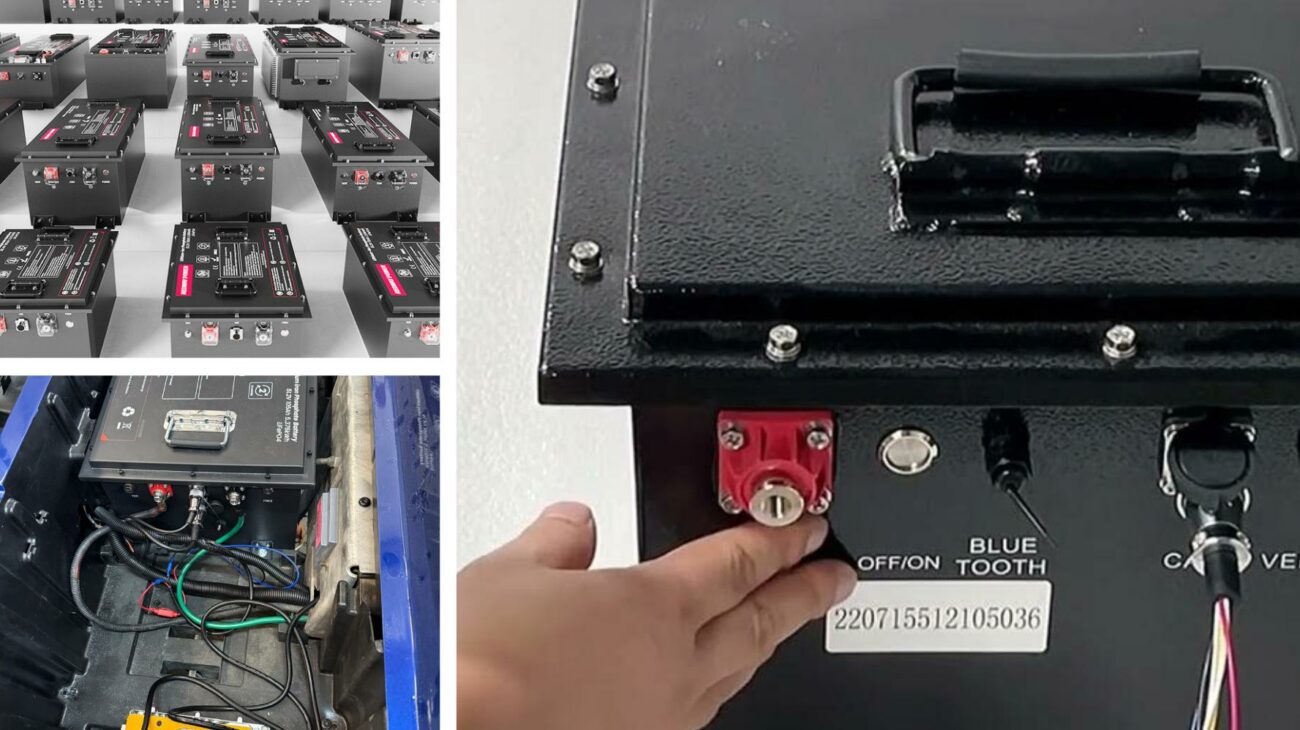To maximize golf cart battery lifespan, charge batteries after each use, avoid deep discharges, and use a manufacturer-approved charger. Maintain water levels (for lead-acid batteries) and store the cart in moderate temperatures. Overcharging or undercharging reduces battery life. Lithium-ion batteries require specific charging protocols—follow voltage guidelines to prevent damage.
48V 100Ah Lithium Golf Cart Battery
What Are the Different Types of Golf Cart Batteries and Their Charging Needs?
Golf carts use lead-acid (flooded, AGM, gel) or lithium-ion batteries. Lead-acid requires regular watering and full recharges to prevent sulfation. Lithium-ion needs no maintenance but demands precise voltage control. Charging frequency varies: lead-acid batteries should be charged after every use, while lithium-ion can handle partial charges without memory effect.
48V 160Ah Lithium Golf Cart Battery
Flooded lead-acid batteries are the most common and cost-effective but require monthly electrolyte checks. AGM (Absorbent Glass Mat) variants are sealed and spill-proof, making them ideal for uneven terrain. Gel batteries excel in high-heat environments due to slower electrolyte evaporation. Lithium-ion batteries, though pricier, offer 2-3x longer lifespans and faster charging cycles. For hybrid systems, always use compatible chargers—mixing battery types can cause voltage mismatches and safety hazards.
| Battery Type | Maintenance | Charging Frequency | Lifespan |
|---|---|---|---|
| Flooded Lead-Acid | High (monthly checks) | After every use | 4-6 years |
| AGM | Low | After every use | 5-7 years |
| Lithium-Ion | None | As needed | 8-10 years |
Why Is Temperature Critical When Charging Golf Cart Batteries?
Extreme heat accelerates chemical reactions, causing overcharging, while cold slows them, leading to undercharging. Charge lead-acid batteries at 50-80°F for optimal efficiency. Lithium-ion performs better in wider ranges but still risks damage in sub-freezing temps. Use temperature-compensated chargers in harsh climates to adjust voltage automatically.
In winter, store batteries indoors and allow them to warm to room temperature before charging. Summer users should park carts in shaded areas to avoid battery compartment temperatures exceeding 100°F. For lithium-ion packs, built-in Battery Management Systems (BMS) typically halt charging below 32°F to prevent lithium plating. Thermal wraps or insulated battery boxes can mitigate extreme weather effects. Always monitor voltage fluctuations—a 10°F drop increases lead-acid charging time by 20%.
Can Solar Panels Effectively Charge Golf Cart Batteries?
Yes, solar panels with a charge controller can recharge golf cart batteries sustainably. Systems require 12V/24V configurations matching battery banks. Lithium-ion pairs better with solar due to higher charge acceptance. Ensure panels provide sufficient wattage (300W minimum) and use MPPT controllers for efficiency. Ideal for off-grid storage but slower than AC charging.
72V 100Ah Lithium Golf Cart Battery
How Do You Troubleshoot Common Golf Cart Battery Charging Issues?
If batteries won’t charge, check connections for corrosion, test charger output, and verify voltage with a multimeter. Sulfated lead-acid batteries show low voltage and white crust—recondition with desulfation modes. Lithium-ion failures often involve BMS faults; reset or replace the management system. Always inspect fuses and wiring for breaks.
Proper charging is non-negotiable for battery health,” says a Redway Power engineer. “For lead-acid, water levels and full cycles are key. Lithium-ion thrives on partial charges but hates voltage spikes. Invest in smart chargers with diagnostics—they prevent 80% of premature failures. Always prioritize temperature management; it’s the silent killer most users ignore.”
Conclusion
Optimizing golf cart battery charging involves understanding battery type, environmental factors, and equipment quality. Regular maintenance, temperature-aware practices, and using advanced chargers extend lifespan by years. Solar integration offers eco-friendly options, while troubleshooting protocols prevent costly replacements.
FAQ
- Q: Can I leave my golf cart charger plugged in overnight?
- A: Only if using a smart charger with auto-shutoff. Traditional chargers risk overcharging lead-acid batteries.
- Q: How often should I water lead-acid batteries?
- A: Check every 10-15 charges. Add distilled water to cover plates but avoid overfilling.
- Q: Do lithium-ion golf cart batteries require special chargers?
- A: Yes. Use chargers matching their voltage range (e.g., 48V for 48V systems) to prevent BMS lockouts.




